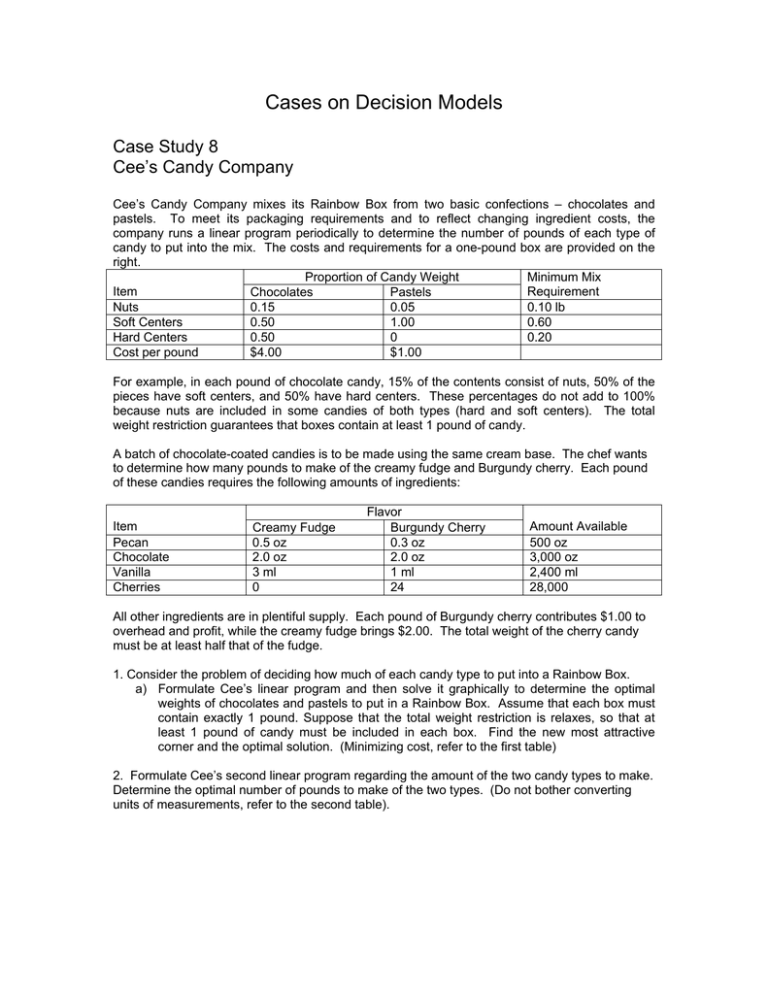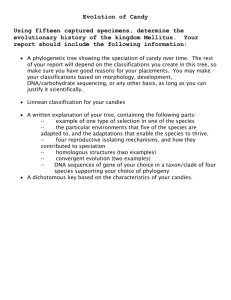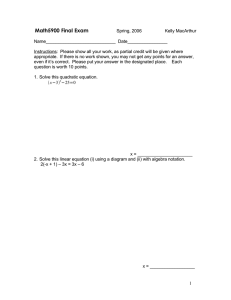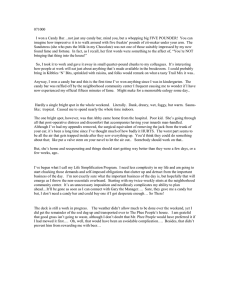Cases on Decision Models Case Study 8 Cee’s Candy Company
advertisement

Cases on Decision Models Case Study 8 Cee’s Candy Company Cee’s Candy Company mixes its Rainbow Box from two basic confections – chocolates and pastels. To meet its packaging requirements and to reflect changing ingredient costs, the company runs a linear program periodically to determine the number of pounds of each type of candy to put into the mix. The costs and requirements for a one-pound box are provided on the right. Proportion of Candy Weight Minimum Mix Item Requirement Chocolates Pastels Nuts 0.15 0.05 0.10 lb Soft Centers 0.50 1.00 0.60 Hard Centers 0.50 0 0.20 Cost per pound $4.00 $1.00 For example, in each pound of chocolate candy, 15% of the contents consist of nuts, 50% of the pieces have soft centers, and 50% have hard centers. These percentages do not add to 100% because nuts are included in some candies of both types (hard and soft centers). The total weight restriction guarantees that boxes contain at least 1 pound of candy. A batch of chocolate-coated candies is to be made using the same cream base. The chef wants to determine how many pounds to make of the creamy fudge and Burgundy cherry. Each pound of these candies requires the following amounts of ingredients: Item Pecan Chocolate Vanilla Cherries Creamy Fudge 0.5 oz 2.0 oz 3 ml 0 Flavor Burgundy Cherry 0.3 oz 2.0 oz 1 ml 24 Amount Available 500 oz 3,000 oz 2,400 ml 28,000 All other ingredients are in plentiful supply. Each pound of Burgundy cherry contributes $1.00 to overhead and profit, while the creamy fudge brings $2.00. The total weight of the cherry candy must be at least half that of the fudge. 1. Consider the problem of deciding how much of each candy type to put into a Rainbow Box. a) Formulate Cee’s linear program and then solve it graphically to determine the optimal weights of chocolates and pastels to put in a Rainbow Box. Assume that each box must contain exactly 1 pound. Suppose that the total weight restriction is relaxes, so that at least 1 pound of candy must be included in each box. Find the new most attractive corner and the optimal solution. (Minimizing cost, refer to the first table) 2. Formulate Cee’s second linear program regarding the amount of the two candy types to make. Determine the optimal number of pounds to make of the two types. (Do not bother converting units of measurements, refer to the second table).


